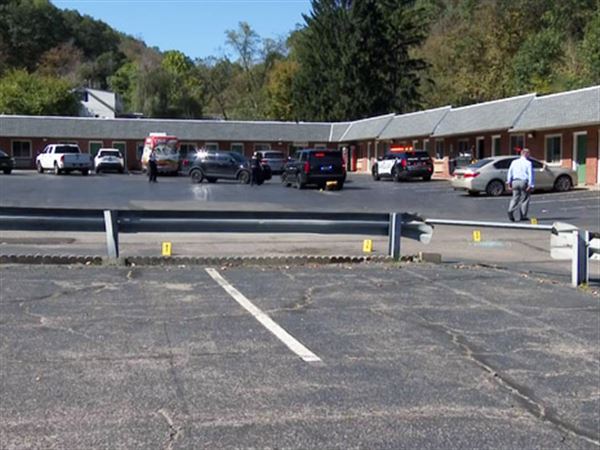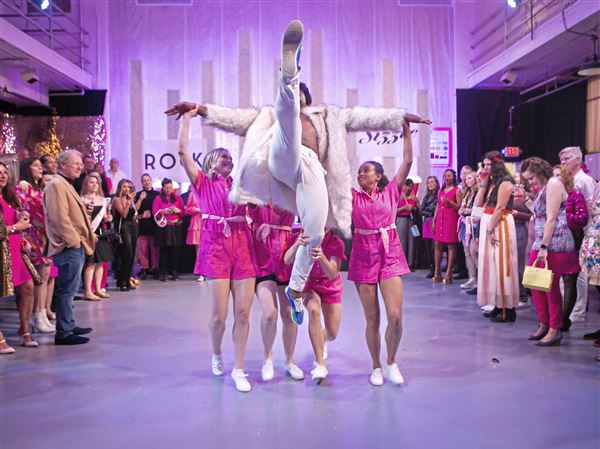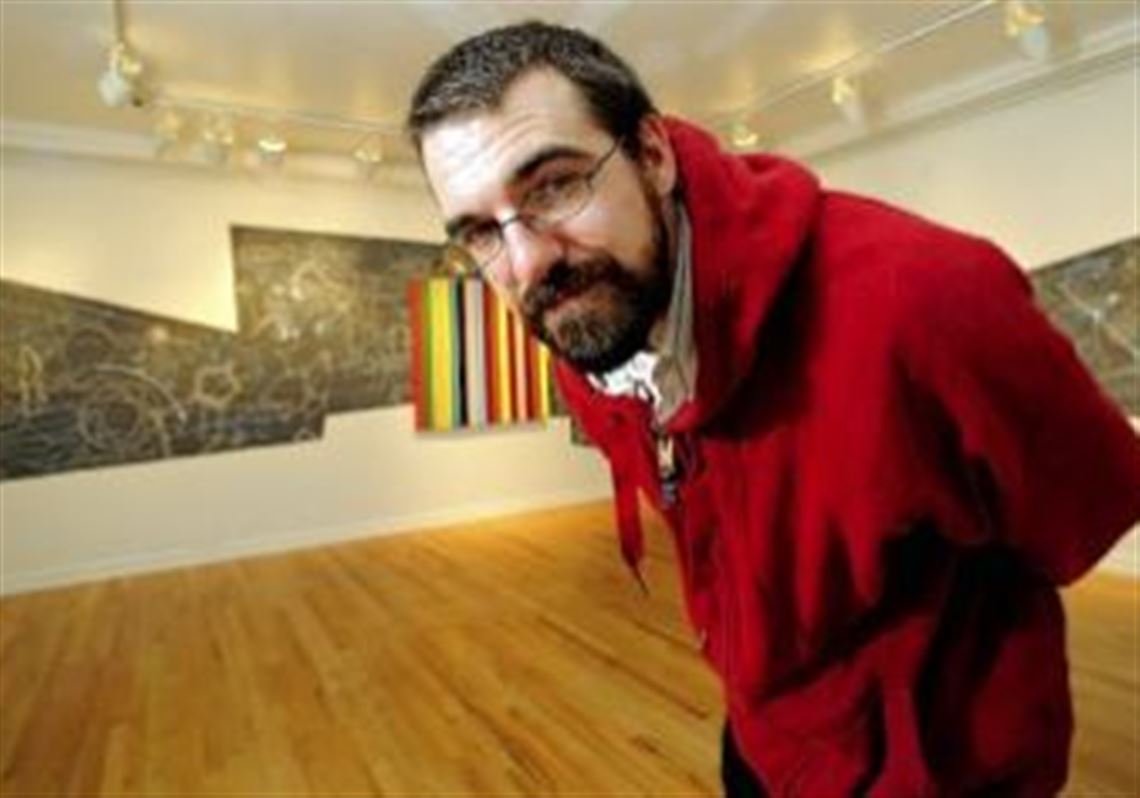The 2014 Pittsburgh Biennial continues to roll out thoughtfully conceived component exhibitions in its most widespread production since Murray Horne initiated the show at Pittsburgh Center for the Arts two decades ago. Exhibitions are now on view at five locations with the final three opening this month.
In 1994, center executive director Robert Grote wrote of providing a “venue for Pittsburgh artists to show that their work transcends the region. The biennial proclaims that there are Pittsburgh artists of national stature and that Pittsburgh recognizes and supports them.”
The biennial has changed since then but the raison d’etre remains the same.
“It’s an evolving process,” said Adam Welch, arts center and Pittsburgh Filmmakers curator and biennial curator for those locations.
This edition is twice as big as the last one, he noted, but “the undercurrent has to be about Pittsburgh artists.” While exhibiting artists live in, or have other connections to Pittsburgh, Mr. Welch emphasized that most also have careers that have impact beyond Pittsburgh.
“The concept of regional artist has maybe changed,” he said. “What is that [designation] supposed to mean? They are dialoging internationally, not specifically aligned with the locale they choose to work in. ... It’s a generality that doesn’t necessarily apply. Some artists are insulted by it. Others don’t find it to be an insult: ’I do work here.’ But that doesn't mean they aren’t thinking globally.”
Mr. Welch is also an artist with a bachelor’s degree from Stony Brook University in New York and a master’s in fine arts from Indiana University of Pennsylvania. He was the center’s 2008 Emerging Artist of the Year and his artwork appeared in that year’s biennial. This is the second biennial he has curated and it was he who introduced the concept of multiple venues in 2011 when the show expanded to The Andy Warhol Museum, Carnegie Museum of Art and the Miller Gallery of Carnegie Mellon University.
The curatorial team was somewhat more cohesive during that first round, all being young, innovative and relatively new to their positions. They met more regularly to discuss the course of the show within the breadth of art being made locally. Eric Shiner has since become director of The Warhol, Dan Byers co-curated the 2013 Carnegie International and Astria Suparak has left the Miller, but their institutions signed on again. In addition the Pittsburgh Glass Center, Mattress Factory and Pittsburgh Cultural Trust’s SPACE have come aboard as biennial venues this year. Mr. Horne, curator of SPACE, also oversees it and Wood Street Galleries among Trust venues. Each institution has worked independently to organize and define its show.
The scope — to represent the region’s art and related language and thought — is the same as in 2011, Mr. Welch said, “but the umbrella is much bigger now.” The main advantage of additional institutions is to “bring in other voices, other institutional directions, manifests, missions.
“I’m not the director of the biennial. I’m a component. [But] I will always view the center as being the hub of this show. We’re the one who brought it to the plate at the beginning.”
Asked why the biennial is important, Mr. Welch responded, somewhat incredulously, “Why is it not?”
“Certainly there’s a larger discourse out there about the nature of biennials and the scales of biennials and which are more important for artists’ careers.
“The [Pittsburgh] Biennial is a means to put together lots of different voices in a certain time frame. For the viewer it’s important that they get to see the microcosms [of expression] reflective of multiple voices, and for the artists, who are often insular, it shows them in a larger context. Artists who are working on different ideas are placed in a proximity that results in a larger dialogue.”
Mr. Welch has noticed an increase in the number of artists remaining in the area. “Now there are tons of artists in Pittsburgh, and there are lots of good artists here. What we need is more gallery space, more funding, more critical reviews and more people purchasing artwork.”
Looking to the biennial’s future, he said possibilities include scaling it back “to make it a little easier. Or, it keeps growing,” and after a pause adds, with a slight grin, “I don’t know how it can keep growing.”
The Miller Gallery opening reception is from 6 to 8 p.m. Friday, preceded at 5 p.m by an exhibition tour with curator Casey Droge and artists. SPACE opens from 5:30 to 9 p.m. Sept. 26 during the Pittsburgh Cultural Trust Gallery Crawl. Both are public and free.
The Warhol will host an evening for Carnegie Museums of Pittsburgh members Sept. 27. A discussion will be held with artist Chuck Connelly Oct. 18 (free with museum admission).
Exhibitions continue at Carnegie Museum of Art, Pittsburgh Glass Center, Pittsburgh Center for the Arts, Pittsburgh Filmmakers and Mattress Factory.
The Biennial has an extensive website: pittsburghbiennial.org.
First Published: September 17, 2014, 4:00 a.m.

















